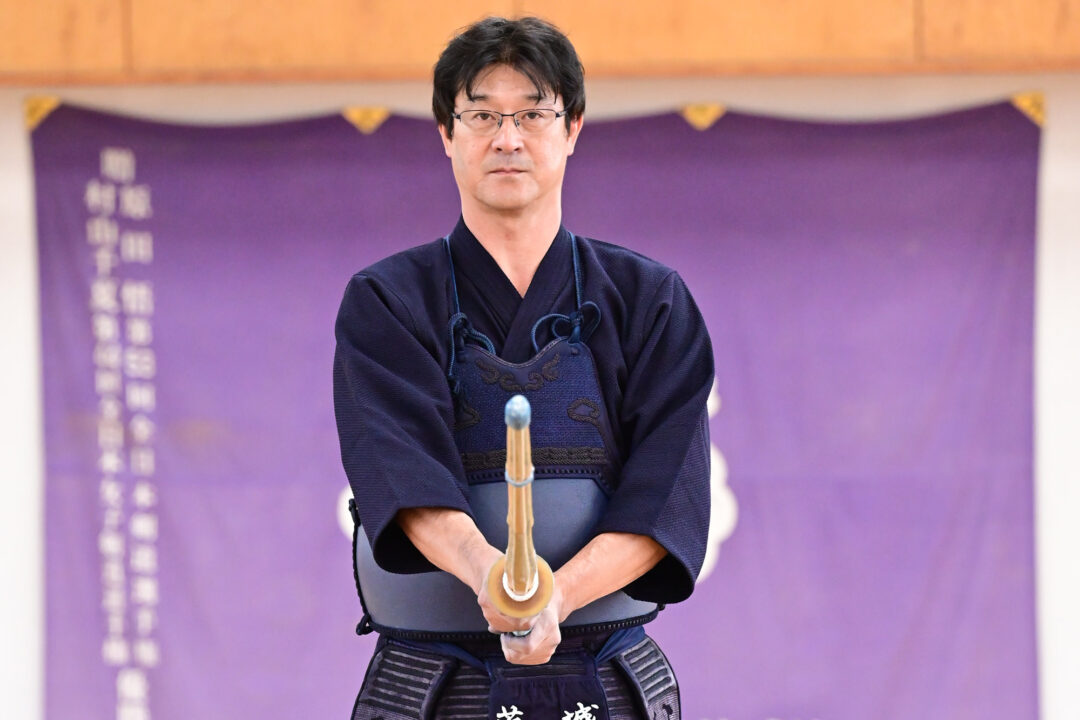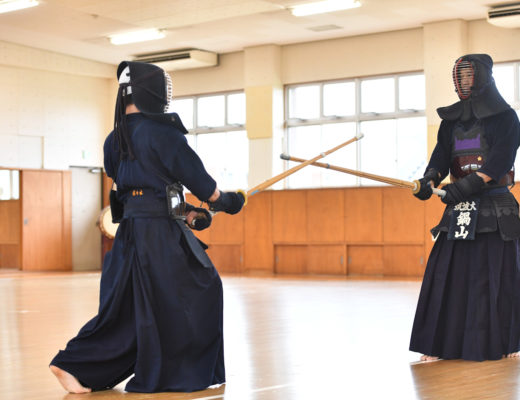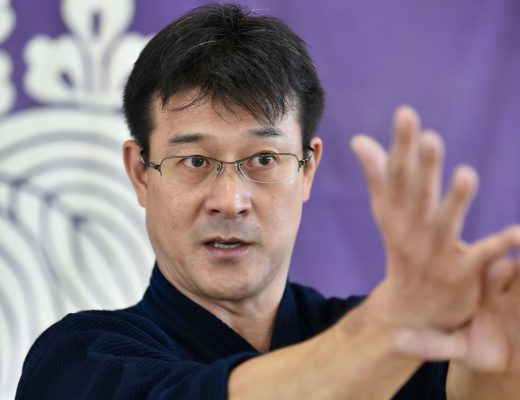2023.11 KENDOJIDAI
Photography: Nishiguchi Kunihiko
Translation: Pepijn Boomgaard
The name Nabeyama Takahiro, the 8th Dan leader of the University of Tsukuba, is synonymous with a dynamic Men strike. He uses his left foot to allow him to strike at any moment. This preparation is the basis of his Seme and allows him to freely strike or counter his opponents.
Nabeyama Takahiro (8th Dan)
Born in 1969 in Fukuoka. He started Kendo at Imajuku Youth Kendo Club. He graduated from PL Gakuen High School and the University of Tsukuba. As a high school student he won the Inter High individual and team titles. As a university student, he won the All Japan Student Championship. After graduating from university, he entered graduate school and became a researcher. His other achievements include participating in the All Japan Championship 10 times, participating in two World Championships, winning the Kokutai, and winning the All Japan Teachers Championship. Currently, he is an associate professor at the physical education department of the University of Tsukuba, and the men’s coach of the University of Tsukuba Kendo Club.
At Imajuku Youth Kendo Club, Yamauchi Masayuki Sensei taught me things such as how to deal with my opponent, how to think of new techniques, and how to place my left foot when being pushed back.
At PL Gakuen, my teacher Kawakami Takashi Sensei consistently told me that “straight is fastest”. There is a teaching about Maai that says “you should fight farther than your opponent and closer than me.” This is not only a tangible factor, but also includes an intangible mental function. If you are in an advantageous situation, your Maai will feel closer and if you are in a disadvantageous situation, it will feel farther. Kawakami Sensei believed that you would gain an absolute advantage if you can strike from a distance from which your opponent can’t reach you, so we repeatedly practiced the orthodox Men strike. Sometimes we would strike Men with our left foot ready to strike and our and our opponent’s Kensen about 50 centimeters apart.
Kawakami Sensei’s philosophy was “straight is fastest” and he simply made us learn how to use our left foot without any difficult explanation. He strictly instructed us to always strike without first moving our feet. It could be said that his strictest instruction was about this one point. He never taught us detailed tactics. If you can strike from a far distance without first moving your feet, you can strike before your opponent. It’s simple, but I think that this is the essence.
Through my experiences as a university kendo club instructor and as a competitor, I learned that if you can’t strike Men, you won’t be able to compete. A strong competitor focuses on Men, and can apply different techniques based on the opponent’s reactions. Of course, some matches are won with techniques other than Men, but I believe that many opportunities are created because the opponent is wary of the Men.
As we age, the strength of our legs declines and our reach shrinks. However, I think that this doesn’t change the fact that this simple Men is an effective tool that can put pressure on the opponent.
If we talk about Suburi, Kirikaeshi, Uchikomi, Kakarigeiko and Jigeiko, there is not much of a difference between what beginners and advanced people do during practice. However, the things that are learned differ according to the level, and training towards these things is what leads to progress.
Therefore, no matter how old you are or what rank you’ve got, it is essential to practice the basics. The most ideal way to score a Men Ippon is by having your Kensen travel the shortest distance from Kamae to your opponent’s Men. It is important to focus on this way of hitting Men, and practice Kote, Tsuki and Do.
Striking Men with one leg
“Once you enter Uchima, strike without moving your left foot.” I think everyone has heard this at least once. Uchima is the distance from which you can reach the opponent with a single step. Conversely, the opponent can also reach you. If you move unnecessarily after entering Uchima, you are presenting your opponent with an opportunity. Therefore, it is necessary to learn the balance distribution between your left and right feet and to strike without first moving your feet.
One way to practice striking without first moving your feet is by standing on only your left leg and striking large Men. It is quite simple. Stand at a distance from which you can reach the Men, stand on your left leg and strike Men.
In recent years, we make first year students who have just entered our university do this exercise. Our students enter the kendo club with 3rd Dan. The criteria for being awarded 3rd Dan is to have mastered the basics of Kendo and have excellent technical ability. 4th Dan, which is awarded to our students during their studies, is for those who have mastered the basics and applications of Kendo and have good technical skills. In order to train the applications, you need good basics as foundation. In this sense, the purpose of this exercise is to help students learn how to strike in a single beat without first moving their feet.
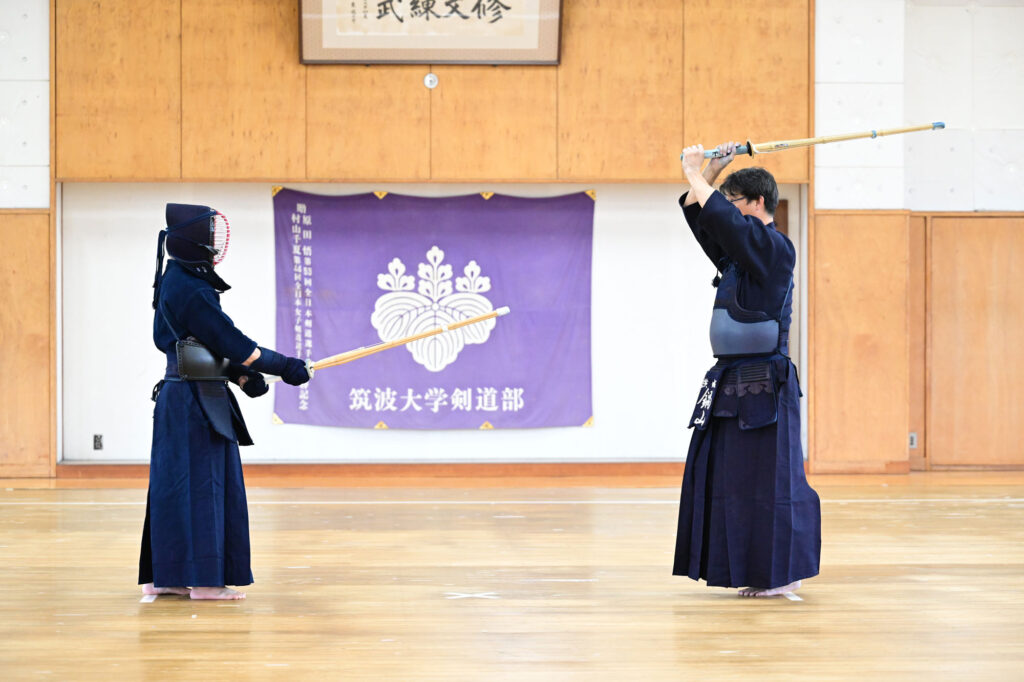
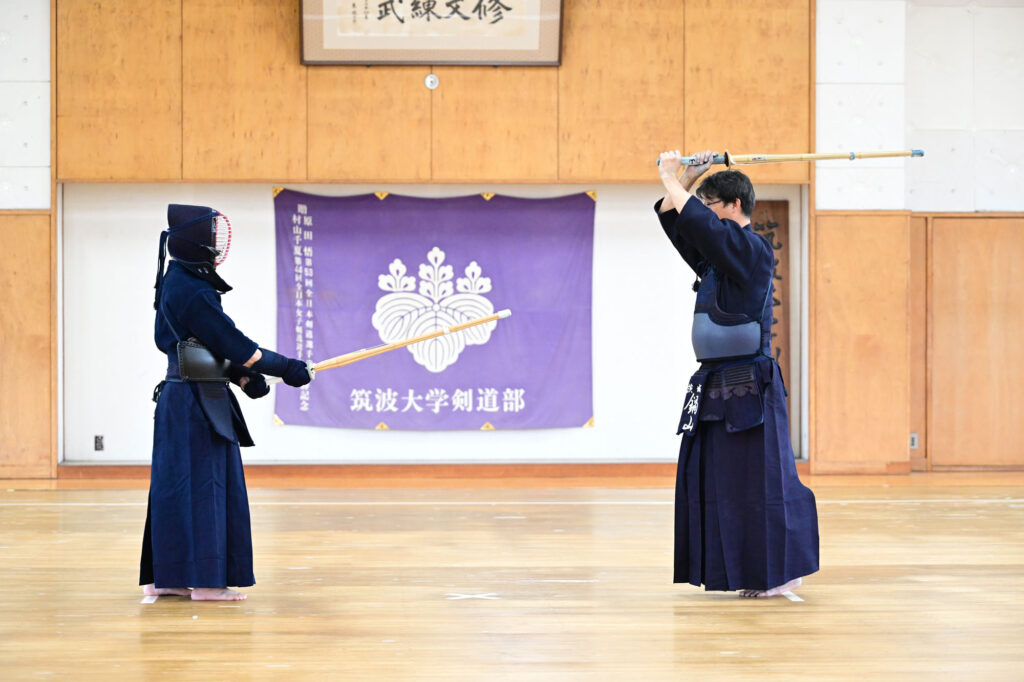
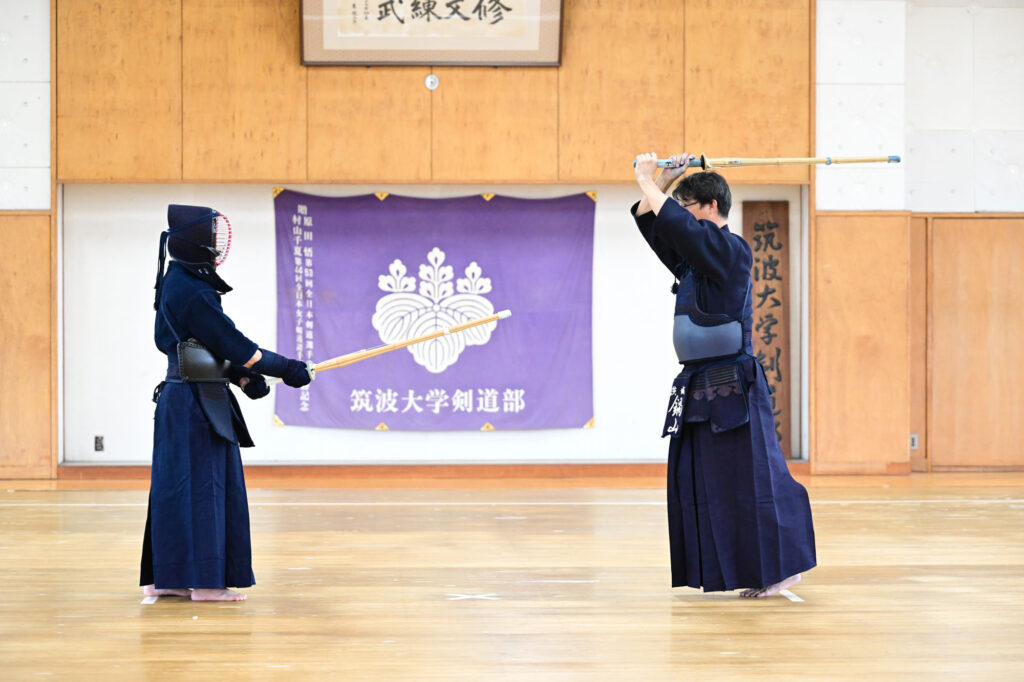
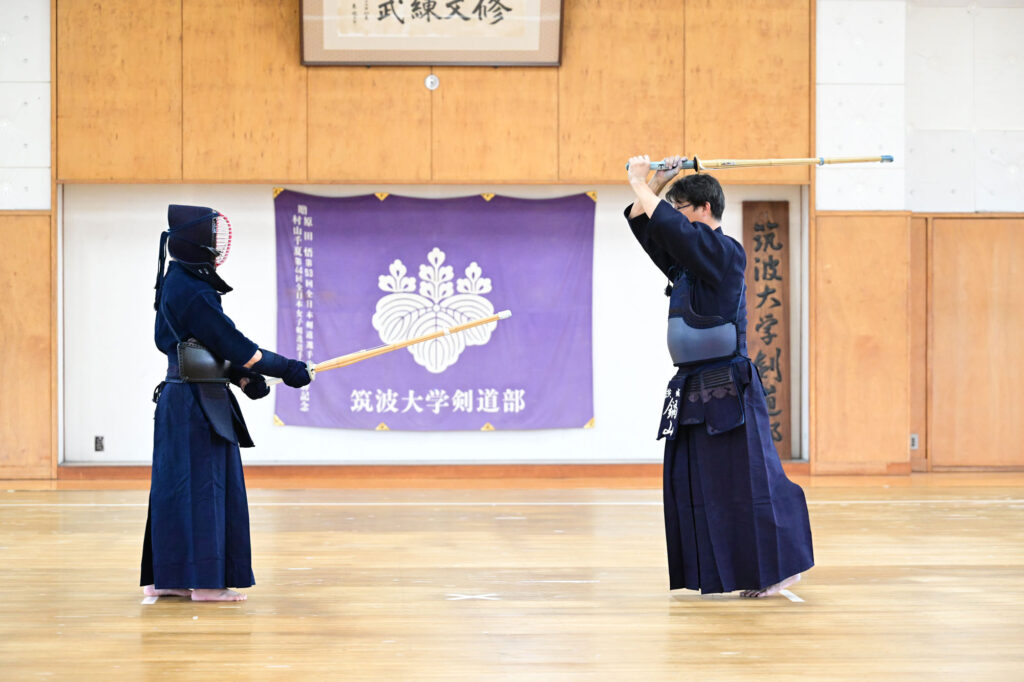
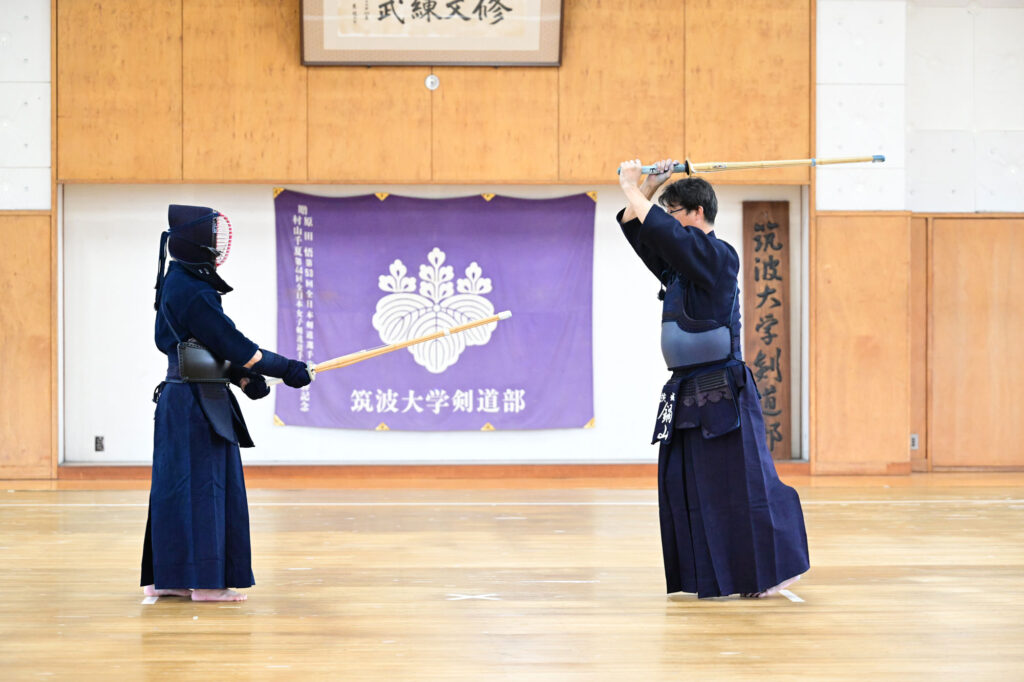
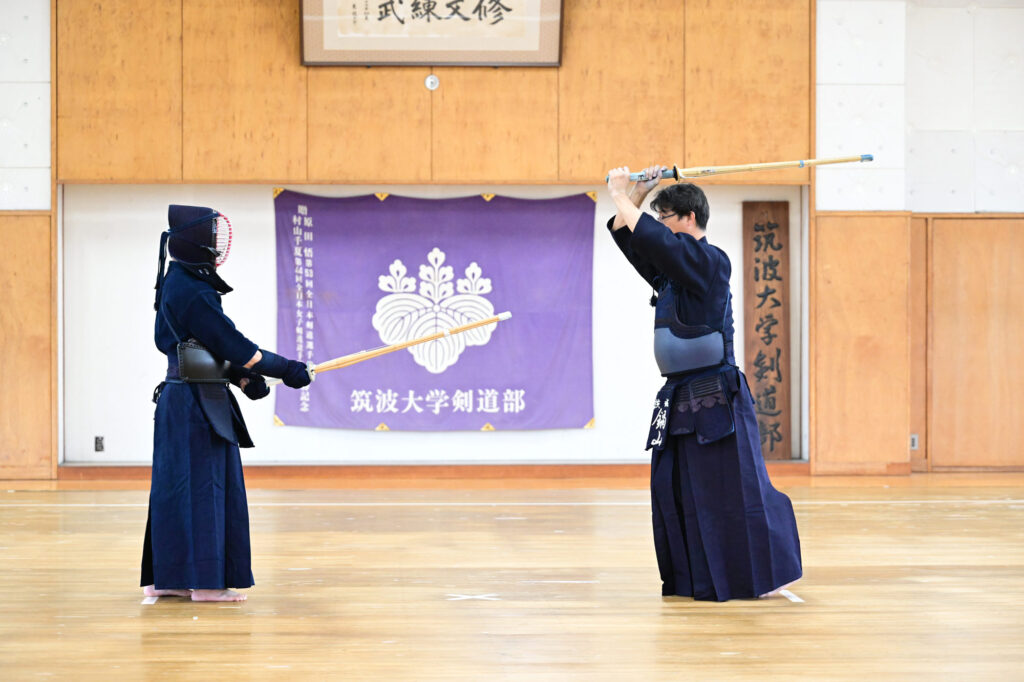

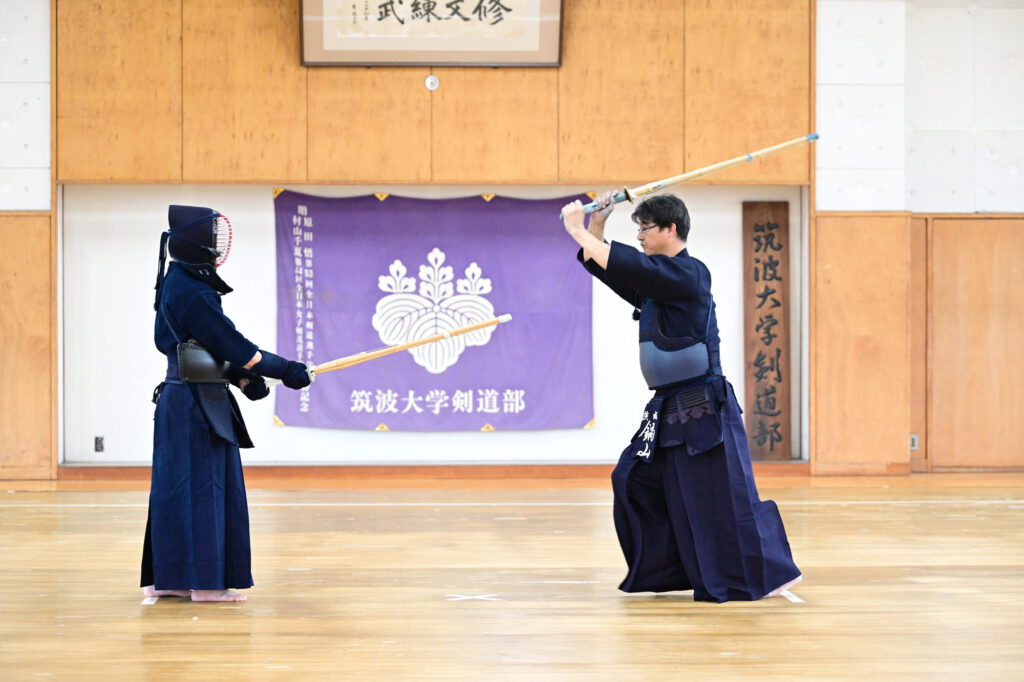
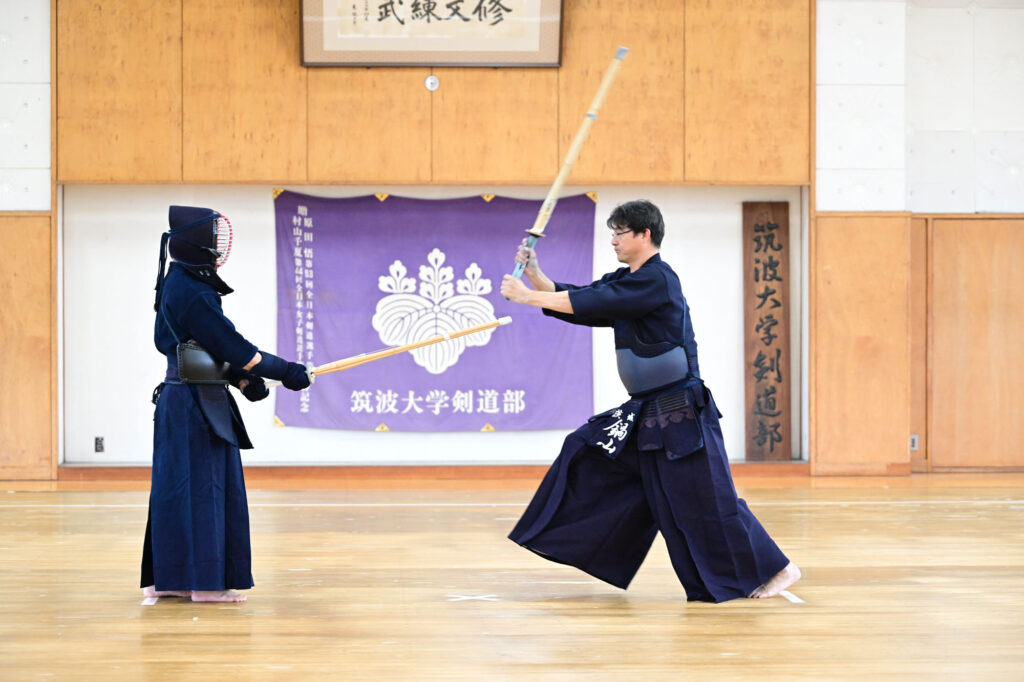
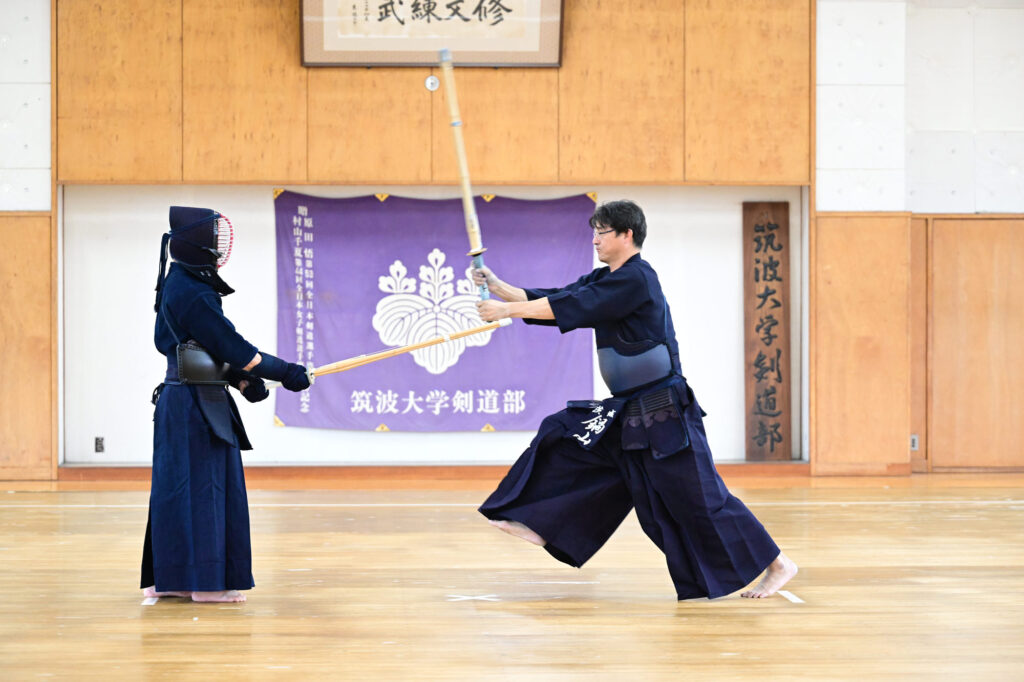

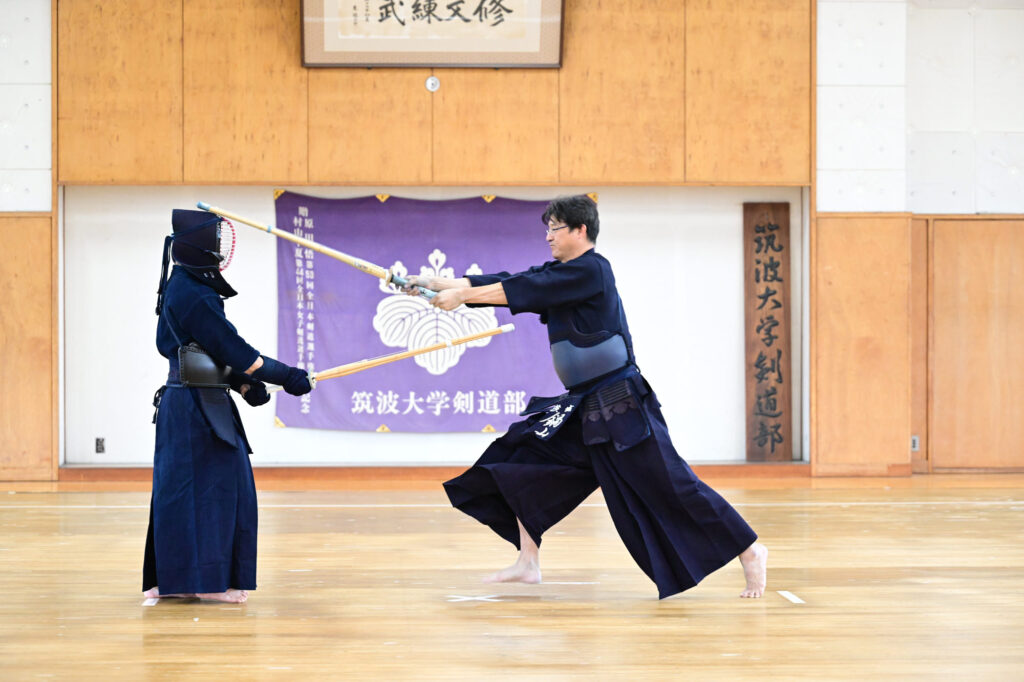
Conveying and sensing intentions
The rest of this article is only available for Kendo Jidai International subscribers!

